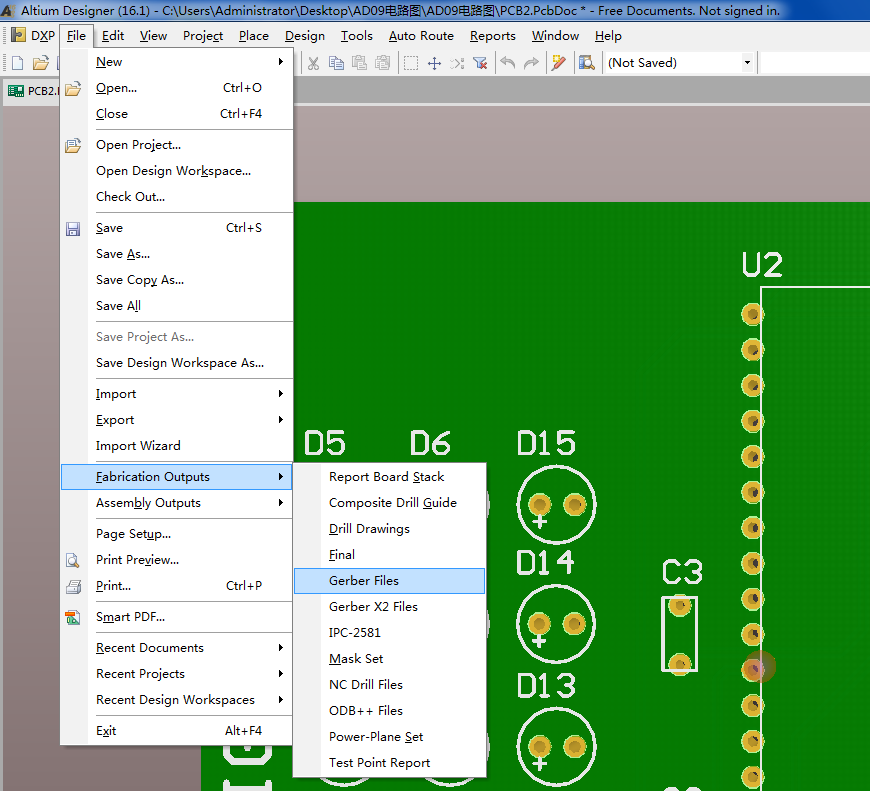

However, you could extend the hole pattern grid to the top of the layout in case you need to orient the potentiometer “upside down” On almost all through-hole potentiometers, the center pin tends to be the wiper. To be compatible with all of those pinouts, you can lay out a 3×3 grid from the front of the package up through the center.Īll of the trimpots in the previous photograph can be dropped into that same location on the board. Potentiometer multi-compatible PCB layout The rightmost trimpot has a finger-friendly dial, with the non-staggered pins located at the front of the package. The next trimpot is a multiturn that can be mounted vertically or laid flat. The next trimpot is more compact, but more expensive. The leftmost trimpot is the least expense and doesn’t tend to twist off the board due to the staggered pins. The most common trimpots have 0.1-inch spaced leads, but the leads are attached in slightly different places with respect to the component body. Small potentiometers (often called trimmers or trimpots) are also available in a variety of packages. Universal layout for three-pin linear voltage regulators Choice of Trimmer Potentiometers That covers all 6 permutations (3 factorial = 3! = 6) of pins.Īnd, if you make sure all of the holes are 0.040 inch diameter, then you have covered both TO-220 and TO-92 packages. +UN, +5, GND (installed backwards in bottom three holes).+5, GND, +UN (installed backwards in middle three holes).GND, +UN, +5 (installed backwards in top three holes).With a little bit of forethought, you can design your circuit board to accept a variety of regulators.Īdding a fourth and fifth hole (in this case duplicating the input and output pins) permits the following pinouts: Sometime after the board has been made, you may find that the circuit needs a bit more current, a higher input voltage, a lower dropout voltage, or maybe you just ran out of stock of a particular voltage regulator. In the picture below, notice that none of the pinouts match. The order of the leads and the type of package (TO-220 or TO-92) varies from part to part. Regulated voltage output (5V, 3.3V, etc).Linear voltage regulators are popular for their simplicity. You can absolutely stencil, build, and reflow PCBs without big, expensive equipment! And you can even cut stencils at home.To see the examples presented in the article, click on the file and save it.ĭownload Copper Connection, the PCB layout software. Stencil solder paste and doing SMD reflow is super helpful if you are running more than 3 or 4 boards. At SparkFun, we use this layer to have a paste stencil cut. Your fab house can probably work with this but may want something different. The dimension layer gets exported to the top copper layer using our CAM file. Note there is no dimension file in this list. *.TXT - Drill file (coordinate information).The *.gpi (general photoplotter information) and *.dri (drill information) are generally not needed by the PCB fabrication house. This is handy if you need to revert back to a version you were working on. Every time you save the schematic or board Eagle will create a new b#_ file and save the previous brd file to it.
#How to edit the solder mask in sprint layout zip
If you want to post or share your design with a friend online, these are the two files you need to zip and send them.Īll the files ending in *.b#1. The *.brd and *.sch files are the main Eagle files. Click again to anchor the trace, then click again to stop routing that trace. Drag out the wire to a grid intersection (it’ll snap to it). Here is a quick breakdown of the key commands we’ll be using:Ĭlick on the middle of pad VBUS. Did I mention routing a board is like solving a puzzle? And I love puzzles! We like to think we should be pushing for a board that not only works but also looks good. The boards worked, but they looked awful. This is a change from my views a few years ago. You are welcome to use the auto-router if you please.Īt SparkFun we route everything by hand. Let’s start routing! We’re going to route this board by hand to show more advanced routing techniques. Now press F11 to return all the layers to their original / default viewing state. Then grab more bits and bumped them up a few clicks. I used this trick to grab two standoff holes and the frame at the same time and made the board wider. Remember to use the Alt+F7 group command to group stuff together, then press F7 to go into 'move' mode, then Ctrl+right click to move the group.


 0 kommentar(er)
0 kommentar(er)
